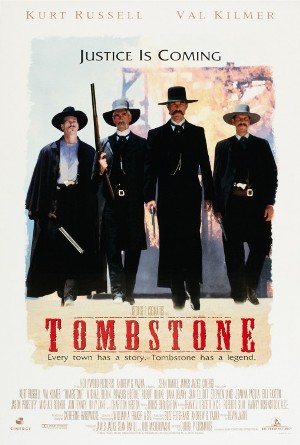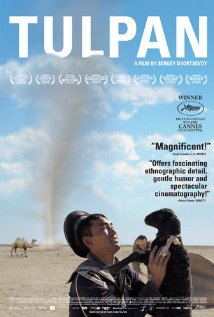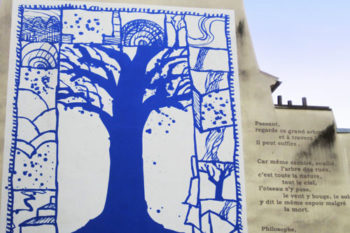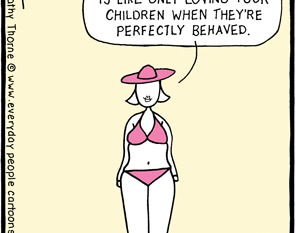Our contributors put their heads together and came up with this wonderful idea: to write about a film that represents their country and their culture. So grab some popcorn, sit back and get ready to enjoy the films chosen by our contributors.
Sean Oliver, our contributor from the United States, chose Tombstone
Tombstone is a fictionalization of the events that led up to the “Shoot-Out at the OK Corral” and its aftermath; one of the most well-known historical events in the post-Civil War western United States. It follows the exploits of “retired” Dodge City Marshall Wyatt Earp, his 2 brothers, and their families as they move west in search of their fortunes among the mining boom towns. The movie itself, and many accounts of Wyatt Earp’s travels paint him as a mythical figure: stoic, highly-principled, but with a thirst for money and success. In reality, he was a halfway decent lawman, who despite his best efforts never did strike it rich. It’s a fitting re-telling of these historical events, in that Americans tend to mythologize the “Old West”, as a time of great violence, but also of great opportunity. Americans’ collective recollection of the period tends to be a bit of a caricature, and often ignores the sad realities, where disease, poor education, violence, and discrimination against Native Americans, Chinese (railroad laborers), blacks, and Mexicans was the order of the day.
The movie has everything Americana: Stoic yet fun-loving protagonists, a gang of evil-doers (“The Cowboys”) to fight against in the name of justice, biblical overtones, opium addiction, corruption, the casual racism of the period, the early years of the women’s suffrage movement, and a fatally flawed co-star (Val Kilmer as Doc Holiday) who sacrifices everything for his only friend, Wyatt Earp. It’s the quintessential American Western, in my opinion, except for the complete omission of any Native Americans… even as extras, to my recollection.
Celia Emmelhainz, our contributor from Kazakhstan , chose Tulpan
One of the most lively movies to represent Kazakh culture in recent years is Tulpan, a 2008 film (directed by Sergei Dvortsevoy) that paints a comic picture of life on the Kazakh steppe. Asa is a young man who has just returned from a stint in the Russian navy. He struggles after his brother-in-law in caring for sheep, birthing lambs, and adjusting to life on the steppe. His world lights up as he tries to win the attention of a beautiful girl named Tulpan, but she dreams of going to the city. Riding across the countryside in a jeep that blares Boney M, Asa eventually finds his place – but will Tulpan be by his side? It’s a great movie, subtitled in English, and I recommend it for all audiences!
DeeBee, our contributor from France, chose Amélie
“Le destin fabuleux d’Amélie Poulain” or “Amélie” as the film is known abroad came on screen in 2001. The film revealed the pretty Audrey Toutou who has since starred with Tom Hanks in The Da Vinci Code. It is also a film that enjoyed one of the biggest international success!
“Amélie” is a very funny film as it is intentionally in complete breach with the style of modern films. It has a strong retro touch which transforms it into a kind of comics and takes you into a parallel dimension.
It’s a film that makes you laugh and smile, a sort of tender and humorous parody of life in a popular building of Montmartre in Paris. The characters are hilarious yet moving and endearing.
The plot
Amélie is a little girl who lost her mother at an early age and lived with a depressive father in a quiet provincial town. As a reaction she developed a very fecund and whimsical imagination. Once adult she works as a waitress in a small cafe of Montmartre run by a former circus performer! That should now give you now an idea of the film!
Amélie leads a simple and orderly life that changes the day of Princess Diana’s death when she discovers a small tin box hidden behind a skirting board in her apartment. She manages to find the identity of the boy who lived there 40 years earlier. She places the tin box in a telephone booth which she calls as the “boy”, now a middle-aged man, walks by.
The shy Amélie follows and observes him from a distance as he opens the box and rediscovers all these childhood memories. Captivated by his pleasure, she swears to dedicate from now on her life to spread happiness around her and improvises herself matchmaker! From that comes out a whole series of hilarious situations and misunderstandings…
Sheryl Parbhoo, our contributor from the US, chose The Blind Side
Football and the South go together like chicken wings and beer. Or, better yet, like pulled pork and cole slaw. There’s just something innately southern about rooting for the underdog and celebrating his hard earned victory, because, after all, the South has been the underdog to the North’s winning team from the get-go. So, movies about football in the South are a special treat, and The Blind Side, starring Sandra Bullock, is a poignant story about the underdog’s first tastes of the bittersweet fruits of victory.
Michael Oher, a homeless African American teen from the housing projects of Memphis, is recruited to the football team of a private school, where he catches the notice of the Tuohys, a wealthy white couple whose children attend the school. They take him into their home, feeding, clothing, and housing him, and, in the face of racism, eventually fitting him into their family. A die hard college football fan, and evangelical Christian, Leigh Ann Tuohy, played by Sandra Bullock, works hard to nurture Michael’s athletic talent and his academic performance, while mothering him at the same time. Michael is recruited to play football for Ole Miss, Leigh Ann’s alma mater, only to face the racist accusations that the only reason a rich, white family would take in a poor African American kid, was for the football. As a family, however, they overcome the charges, and Michael moves on to play college football, and later for the NFL.
The Blind Side represents the many faces of the modern day South. Thriving cities, like Memphis and several others in the South, sparkle on the surface from corporate successes. But, in reality, the divide between the “haves and the have-nots” is still often a racial one, and racial distrust is still alive and well on both sides. It is a fact that abysmal housing projects are home to many African Americans, and affluent neighborhoods are home to many whites. It is also a fact, that there are individuals in both settings who do not fit the mold, and strive for change. Through Michael Oher’s story in The Blind Side, viewers see that glimmer of hope that keeps the underdog going. And in the South, that is worth cheering for.
Simona, our contributor from Italy chose The Great Beauty
One movie I would all recommend to watch to get an idea about Italy is “the great beauty”. You might have read about it, since it has been awarded the Golden Globe Award for best foreign movie last January and it has received a nomination for the Academy Awards for the same category.
Rome is my favorite city in the world- I can never get enough of it- and this movie shows it in its amazing beauty. It is quite a slow-paced story, not much of action but a lot of thinking involved, and the scenes shown are portraying the city in the best way possible.
Its vivid colors, its noise, its music, its hidden spots, the quietness of the summer nights when not many people are around, the stillness of the summer days when it is far too hot to be anywhere but home getting some rest.
Watch out though- the lifestyle portrayed in the movie could be misleading and let you think that that is Italy. That is instead a very good representation of upper class’ dolce vita and it is very far away to the average people’s world.
Still, I believe it is interesting to have a look at it. It is a movie that can be interpreted in a lot of ways- according to me it wants to show how fake and unhappy you can be, even if very rich, very lucky and surrounded by the most beautiful city in the world.
Nuria, our contributor from Costa Rica, chose Gestación
“Gestación” is a Costa Rican drama movie produced in 2009 by Esteban Ramírez. It’s the story of Jessie, a 16 year-old high school student who lives in a poor neighboorhood of San José, and Teo, a high school student from upper-middle class. They meet and fall in love, and sooner than expected face the consequences of their acts. That’s how their lives completely change.
This movie was inspired in true stories, and it reflects a reality that is widely present. The capital of Costa Rica, San José, is shown in such a way that no other movie had ever accomplished. The many neighborhoods, the streets, the daily nature of Costa Ricans, the food and more is present in this great film.
“Gestación” shows the growing social-class gap and urban growth, and also today’s youth with their desires, fears, mistakes, wise choices, search for affection, sexuality, expressions and gestures. At the same time, this movie warns of an insufficient sexual education and denounces prejudice and hypocrisy. Other important issues shown are teenage pregnancy, abortion, responsible fatherhood, family conflicts, the lack of a father figure and the dilemma of either studying or working.
This excellent Costa Rican movie has won several international awards at various film festivals in Colombia, Cuba, Spain and Central America. The main actress, Adriana Álvarez, received awards in Dominican Republic and Spain for her performance; she was the first Costa Rican actress to ever win such an award.
“Gestación” was #1 in the Costa Rican movie theaters for four consecutive weeks, above popular foreign films of the moment. It had the highest national release in history. This movie is an unforgettable and unprecedented experience of national identity that makes us reflect upon crucial issues of Costa Rican young people, who have truly identified with the film characters.
Here’s the link of the trailer:
You can watch the whole movie (in Spanish only) in this link: http://peliculashoy.com/gestacion-pelicula-completa.html#.URR0pNuuxfs.facebook
Read more
Watch world movies online for free: dialogue of cultures film festival
How have Superheroes impacted our culture
What are you listening to? Our contributors share their favourite music from around the world







Thanks for these recommendations! I’ve watched Amélie but haven’t heard of the others. I’m going to look out for them.